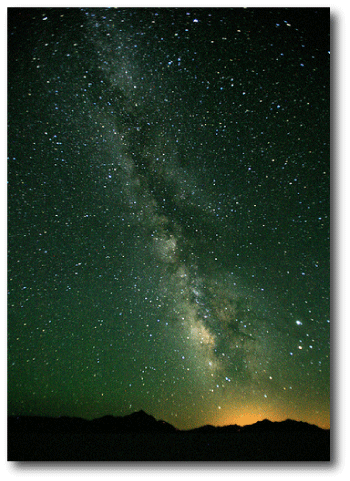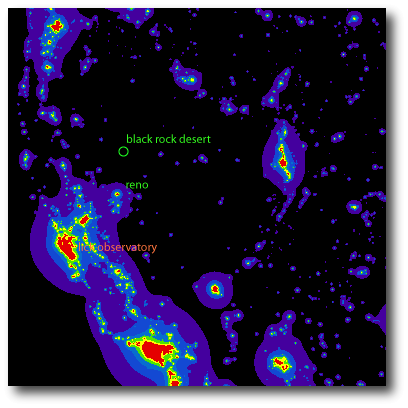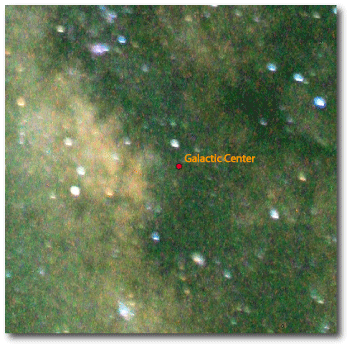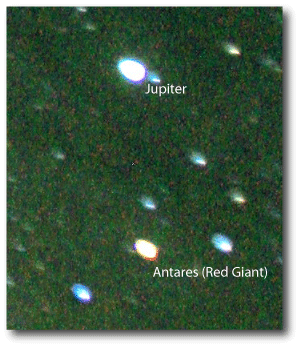
Image Source.
I’d never really seen the Milky Way until I saw it on a perfectly clear and moonless July night from a spot just below the Arc Dome in central Nevada. It spills a swath of patchy luminosity that seems to split the sky in half; a barred spiral galaxy, seen edge-on, and from within. One hundred billion intensely glowing stars, like sand grain jewels, each separated by miles. The photo above (taken by Steve Jurvetson last weekend from the Black Rock Desert in Nevada) reminded me of that experience.
The dark sky applet shows that the interior of Nevada (away from Las Vegas!) contains many of the least light-polluted areas of the United States.

Under a totally dark sky, you can distinctly see the star clouds in the foreground of the galactic center. It’s eerie to think that the 3-million solar mass black hole lurking in the center of the galaxy is just to the right of the bright luminosity of Baade’s Window near the boundary between Sagittarius and Scorpius.

The photo also shows Jupiter within a few degrees of Antares — a nice illustration of the fact that Jupiter appears slightly brighter than the brightest stars.

Newton used this similarity in apparent brightness to get the first real estimate of the staggering distances to the stars. He assumed that the stars are similar in absolute brightness to the sun, and he assumed that Jupiter (whose distance and angular size were known to him) is a perfect reflector of sunlight. This method underestimates the distance to Sirius by more than a factor of five, but it does a fairly reasonable job for Alpha Centauri.

One of the arguments against heliocentrism was the non-observation of parallax – if it was too small to be seen then the ancients were smart enough to realise the stars had to be an immense distance away, because they had a pretty good idea of just how big the Solar System was and thus an AU. In Archimedes “The Sand Reckoner” he mentions Aristarchus’ heliocentric model and how he believed the distance to the stars to be in the same ratio to the Earth-sun distance as the AU was to the Earth’s radius – thus roughly 20,000 AU to the stars. Roughly 20,000 Earth radii to the stars was needed in the Ptolemaic Cosmos – and that seemed a staggering immensity enough since it all spun around the Earth once a day. No wonder the stars were bright – they were glowing from friction against the Prime Mover!
One of the toughest beliefs in astronomy to give up was the need for a physical connection between the celestial bodies – for the Greco-Romans it was crystal spheres to ensure the ‘perfect’ circular motions of the heavens. Dozens of spheres were needed to fill the spaces between the planets and the Celestial sphere because ancient physics couldn’t imagine frictionless motion in a void. Even the Mechanists like DesCartes filled ‘space’ with fluid, and even after Newton many natural philosophers toyed with fluid-filled models to avoid action-at-a-distance.
Did Newton ever observe Alpha Centauri? If so, from where?
Newton never made it to the Southern Hemisphere, although in 1676, Edward Halley did mount an expedition to St. Helena to observe the southern sky.
Well, if you REALLY wanna see the Milky Way, come to the Australian outback at about this time of year.